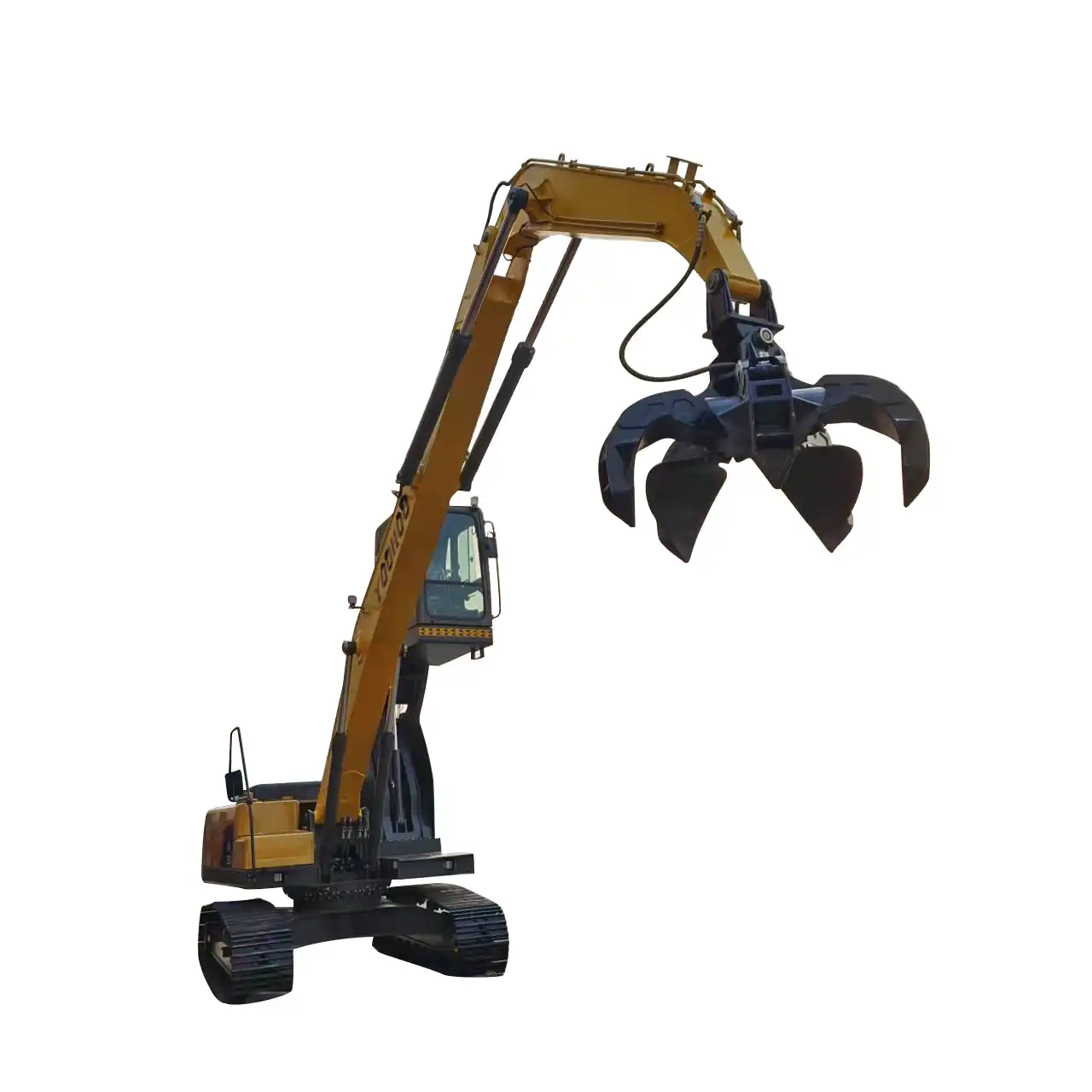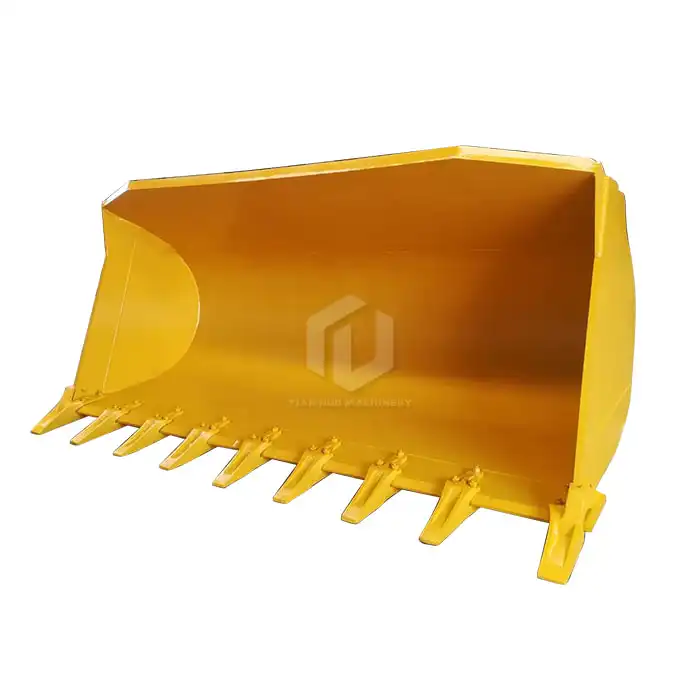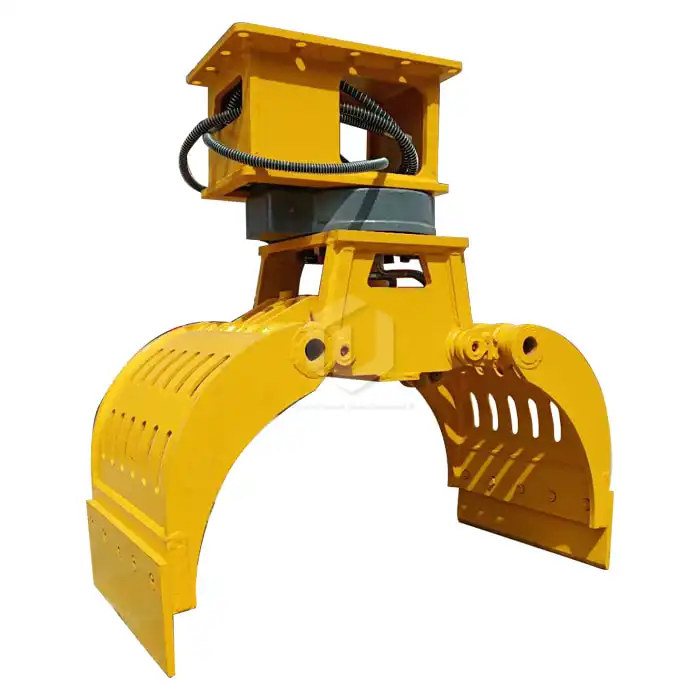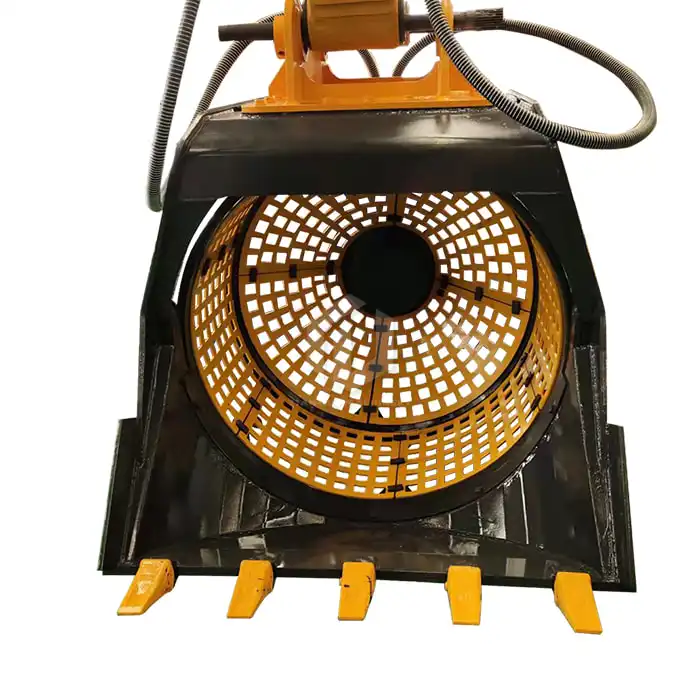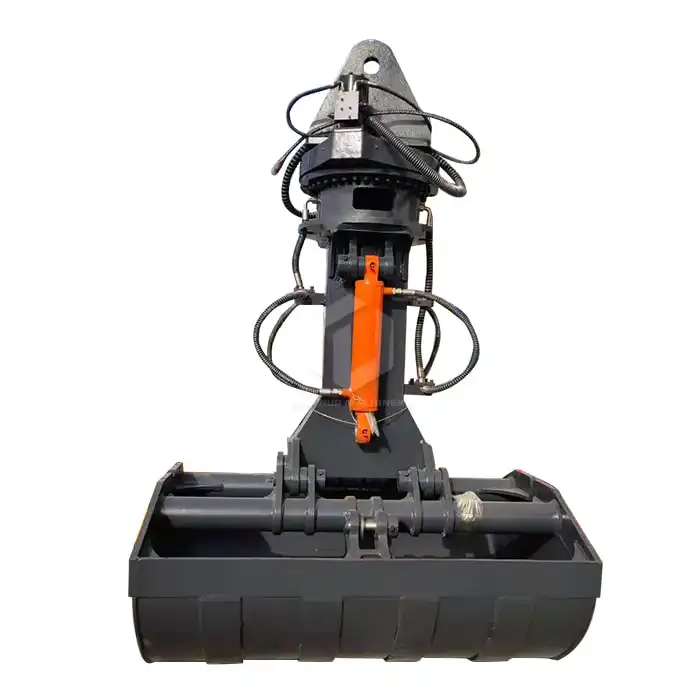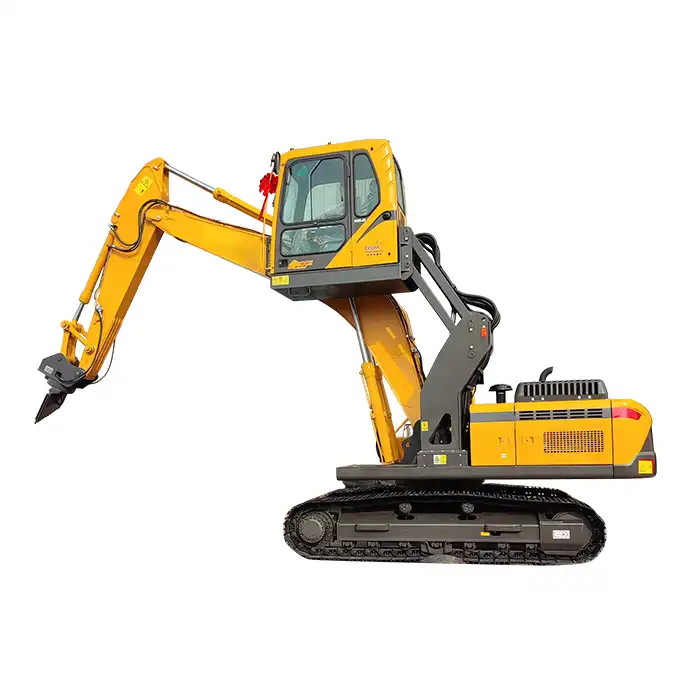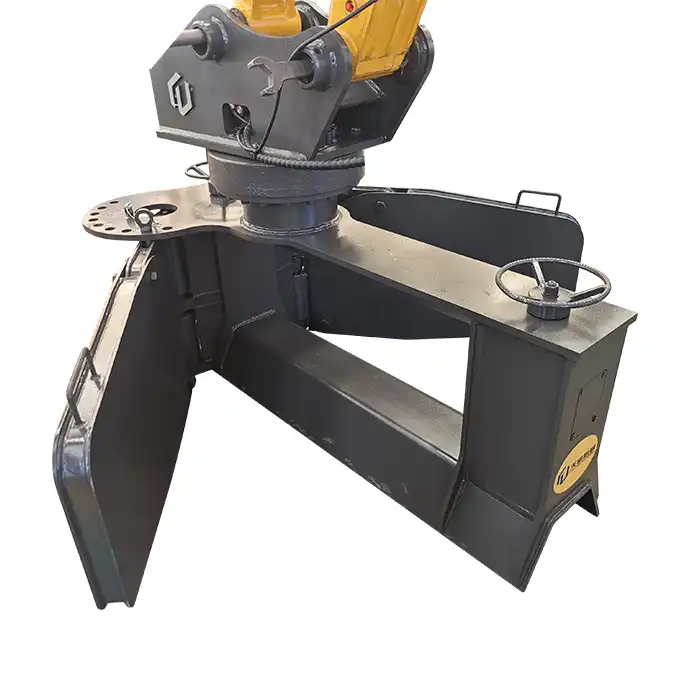Excavator Extension Arm VS Boom
Excavators are versatile machines that play a crucial role in various construction and earthmoving projects. Two essential components that significantly impact an excavator's performance are the excavator extension arm and the boom. In this comprehensive guide, we'll explore the structural differences between these components, their effects on the excavator's reach, and when to use an extension arm instead of a boom. By understanding these aspects, you'll be better equipped to make informed decisions about your excavator's configuration for optimal performance on the job site.

What are the structural differences between an extension arm and a boom?
To understand the structural differences between an excavator extension arm and a boom, it's essential to first recognize their basic functions and designs. The boom is the primary arm of the excavator, typically attached directly to the machine's body. It serves as the main support structure for the entire digging assembly. On the other hand, an extension arm is an additional component that can be attached to the standard arm to increase the excavator's reach.
The boom is generally a more robust and rigid structure, designed to withstand significant forces and provide stability during operation. It's usually made of high-strength steel and features a box-section design for maximum strength and durability. The boom's shape and size can vary depending on the excavator's size and intended applications, but it generally maintains a fixed length.
In contrast, an excavator extension arm is designed to be more flexible and adaptable. It's typically lighter than the boom and consists of multiple sections that can telescope or fold to adjust the overall reach. The extension arm is usually attached to the end of the standard arm, effectively extending the excavator's reach beyond its normal capabilities.
The structural differences between these components are primarily related to their intended functions:
1. Material composition: While both are made of high-strength materials, the boom often incorporates thicker steel plates to handle greater loads.
2. Design complexity: Extension arms often feature more intricate designs with multiple moving parts to allow for adjustable reach.
3. Weight distribution: Booms are designed to balance the excavator's weight, while extension arms must be lightweight to maintain stability when extended.
4. Attachment points: Booms are directly connected to the excavator's body, whereas extension arms are attached to the standard arm or stick.
Understanding these structural differences is crucial for operators and project managers to make informed decisions about which configuration best suits their specific needs.
How do extension arms and booms affect the excavator's reach?
The impact of extension arms and booms on an excavator's reach is significant and directly influences the machine's overall capabilities. Let's explore how each component affects the excavator's reach and performance.
Boom's impact on reach:
1. Vertical reach: The boom primarily determines the excavator's maximum vertical reach. A longer boom allows the machine to dig deeper and reach higher points.
2. Stability: The boom's length and design affect the excavator's stability, especially when fully extended. Longer booms may require counterweights to maintain balance.
3. Lifting capacity: The boom's design and strength directly impact the excavator's lifting capacity, with shorter booms generally offering greater lifting power at closer ranges.
Extension arm's impact on reach:
1. Horizontal reach: An excavator extension arm significantly increases the machine's horizontal reach, allowing it to access areas beyond the standard arm's capabilities.
2. Versatility: Extension arms often provide adjustable reach, allowing operators to adapt to various job site conditions and requirements.
3. Precision: The extended reach offered by extension arms can improve precision in certain applications, such as demolition or material handling in confined spaces.
4. Reduced repositioning: With an extended reach, operators can cover a larger work area without frequently repositioning the excavator, potentially improving efficiency.
It's important to note that while extension arms can greatly enhance an excavator's reach, they also come with some trade-offs. The extended reach may reduce the machine's lifting capacity and stability, requiring operators to exercise caution and adjust their working techniques accordingly.
When considering the impact of extension arms and booms on reach, project managers and operators should carefully evaluate the specific requirements of their job sites. Factors such as the type of work, site conditions, and required precision all play a role in determining the optimal configuration for maximum efficiency and safety.
When should you use an extension arm instead of a boom?
Deciding whether to use an excavator extension arm or rely solely on the boom depends on various factors related to the job site, project requirements, and specific tasks at hand. Here are some scenarios where using an extension arm might be more advantageous:
1. Long-reach applications: When working on projects that require extended horizontal reach, such as dredging, riverbank restoration, or excavation across wide trenches, an extension arm can provide the necessary reach without repositioning the excavator frequently.
2. Demolition work: In demolition projects, especially those involving tall structures or hard-to-reach areas, an extension arm allows operators to maintain a safe distance while still accessing the target area effectively.
3. Slope work: When working on steep slopes or embankments, an extension arm can help maintain the excavator's stability by keeping the machine on level ground while reaching the work area.
4. Underground utilities: For projects involving work around underground utilities or in areas with limited access, an extension arm can provide the necessary reach without compromising the integrity of surrounding structures or utilities.
5. Material handling: In scenarios where materials need to be moved over longer distances or around obstacles, an extension arm can improve efficiency by reducing the need for multiple machines or frequent repositioning.
6. Specialized tasks: Certain specialized tasks, such as precision excavation in sensitive areas or working in confined spaces, may benefit from the added reach and maneuverability provided by an extension arm.
7. Environmental considerations: In environmentally sensitive areas where minimizing ground disturbance is crucial, an extension arm allows the excavator to work from a fixed position, reducing the impact on the surrounding ecosystem.
It's important to note that while extension arms offer numerous advantages in specific situations, they are not always the best choice. Standard boom configurations may be more suitable for general excavation work, heavy lifting, or applications where maximum stability and lifting capacity are required.
When deciding between using an extension arm or relying on the standard boom, consider the following factors:
1. Project requirements and specifications
2. Site conditions and accessibility
3. Safety considerations
4. Equipment availability and costs
5. Operator experience and skill level 6. Long-term project needs and equipment versatility
By carefully evaluating these factors and understanding the capabilities of both extension arms and standard booms, project managers and operators can make informed decisions that optimize their excavator's performance and efficiency on the job site.
China Excavator Extension Arm Suppliers
As we've explored the differences between excavator extension arms and booms, it's clear that choosing the right configuration can significantly impact your project's success. If you're in the market for high-quality excavator extension arms, Tiannuo Machinery offers a range of solutions tailored to various excavator sizes and project requirements.
At Tiannuo Machinery, we are committed to delivering excellence in railway maintenance solutions. For detailed information or inquiries, please reach out to our management team at arm@stnd-machinery.com, or connect with our dedicated team members at rich@stnd-machinery.com and tn@stnd-machinery.com. Let us help you find the perfect excavator extension arm solution for your next project.
References:
[1] Holt, G. D., & Edwards, D. J. (2015). Analysis of United Kingdom off-highway construction machinery market and its consumers using new-sales data. Journal of Construction Engineering and Management, 141(3), 04014086.
[2] Peurifoy, R. L., Schexnayder, C. J., Shapira, A., & Schmitt, R. L. (2018). Construction planning, equipment, and methods. McGraw-Hill Education.
[3] Mawlana, M., Hammad, A., Doriani, A., & Setayeshgar, S. (2015). Discrete event simulation and 4D modelling for elevated bridge construction projects. Simulation, 91(10), 912-925.

